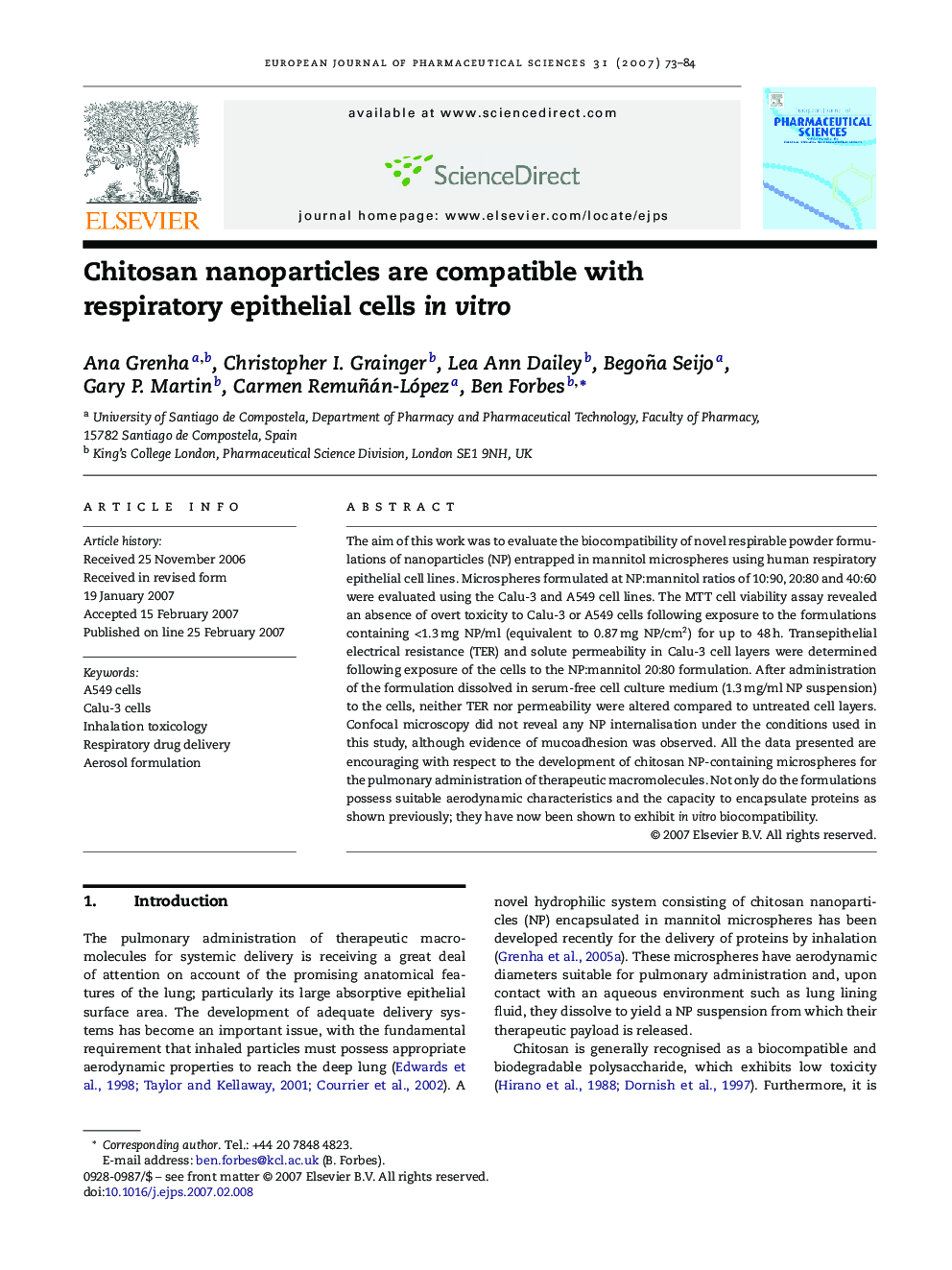| Article ID | Journal | Published Year | Pages | File Type |
|---|---|---|---|---|
| 2481966 | European Journal of Pharmaceutical Sciences | 2007 | 12 Pages |
The aim of this work was to evaluate the biocompatibility of novel respirable powder formulations of nanoparticles (NP) entrapped in mannitol microspheres using human respiratory epithelial cell lines. Microspheres formulated at NP:mannitol ratios of 10:90, 20:80 and 40:60 were evaluated using the Calu-3 and A549 cell lines. The MTT cell viability assay revealed an absence of overt toxicity to Calu-3 or A549 cells following exposure to the formulations containing <1.3 mg NP/ml (equivalent to 0.87 mg NP/cm2) for up to 48 h. Transepithelial electrical resistance (TER) and solute permeability in Calu-3 cell layers were determined following exposure of the cells to the NP:mannitol 20:80 formulation. After administration of the formulation dissolved in serum-free cell culture medium (1.3 mg/ml NP suspension) to the cells, neither TER nor permeability were altered compared to untreated cell layers. Confocal microscopy did not reveal any NP internalisation under the conditions used in this study, although evidence of mucoadhesion was observed. All the data presented are encouraging with respect to the development of chitosan NP-containing microspheres for the pulmonary administration of therapeutic macromolecules. Not only do the formulations possess suitable aerodynamic characteristics and the capacity to encapsulate proteins as shown previously; they have now been shown to exhibit in vitro biocompatibility.
